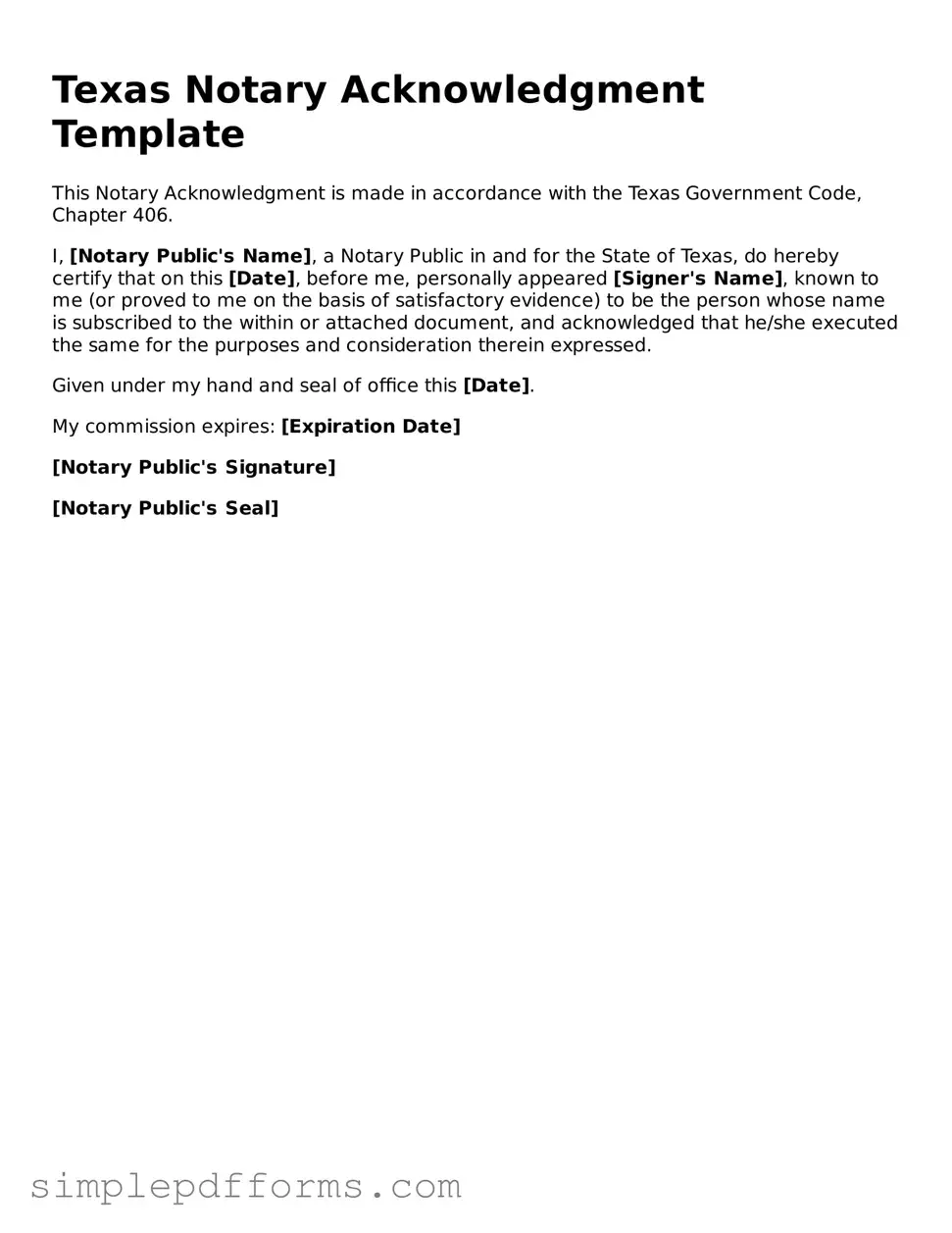Attorney-Verified Notary Acknowledgement Document for Texas State
The Texas Notary Acknowledgement form is a legal document used to verify the identity of individuals signing a document and to confirm that they did so willingly. This form plays a crucial role in ensuring the integrity of various transactions, from real estate deals to legal agreements. Understanding its components and requirements is essential for anyone involved in notarization in Texas.
Open Notary Acknowledgement Editor Now
